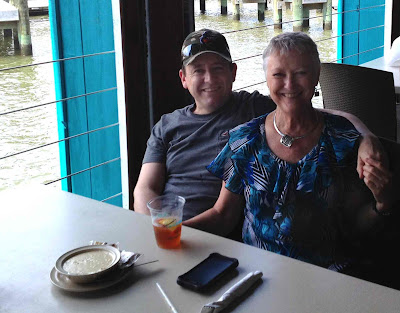 |
| Don't freeze. Don't freeze. Don't freeze. |
"Contrary to popular belief, it is not easy reading a scrolling
teleprompter when the red light is on and 20 people are watching you,
take after take after take." -MC2 Sunderman
Sometimes MCs get to be in front of the camera. On Fort Meade, Md., the Defense Media Activity building is at the center of the military media universe. MC2 Jonathan Sunderman braves unforgiving lights and the all-seeing camera lens to bring our military the latest news.
He just started, and took time to answer a few questions about the most visible job in the rate.
What's your average day like at DMA?
An average day all depends on what department an MC is part of. There are essentially four different divisions:
All Hands Update (AHU)
Image Acquisition
All Hands Magazine
Features Division
I am working in the AHU department so I'll speak on my knowledge and perspective from this division.
AHU is much like a TV station. We have scripts to write, images and graphics to make or collect-- which accompanies the stories and an All Hands Radio broadcast to produce. After scripts and graphics are compiled we get ready for principal photography (to go on set... usually by 0800 M-F).
This is where we go into the studio and film our headlines for the daily AHU broadcast on Armed Forces Network. There is a lot that goes into making this happen on a regular basis. There are MCs in the control room helping direct the broadcast, on set running the cameras and standing in as talent and editing the final product to send it out to the fleet. Most jobs within our division are universal.
"Our goal here is to make sure anybody in our department can
do most of the jobs on any given day."
We have a big assignment board with every day of the week on it, each MC in the AHU department gets tasked with certain jobs throughout the week... this also goes for whomever is going to be on set broadcasting the news.
How did you get to the anchor desk? Did you audition/volunteer/get voluntold?
I simply volunteered for the job. We have a bullpen of MCs between different divisions that go on set on a regular basis. Some of the things taken into consideration are look, voice and body language (some people simply just don't want to do it). There is a very talented voice/broadcast coach that works with all of us individually and only after her approval are we cleared to go on set. Sometimes, it takes several visits with her in order to look somewhat normal in front of the camera.
 |
| MC2 Joshua Sheppard directs an all hands update from the control room. |
What are the rewards/challenges?
There are very few people that are naturals at this sort of thing. Most of us take coaching advice and have to practice reading and studying scripts before we go on set... and, even then we still mess up! It is rewarding though, just like any other job can be when you do well at it.
Let me know if this helps at all. I didn't really scratch the surface in terms of getting to deep into it. I just wanted to give you a snapshot of what it's like here.
--Jon
---------------------
Thanks man! Watch Sunderman at work here.












.jpg)




































